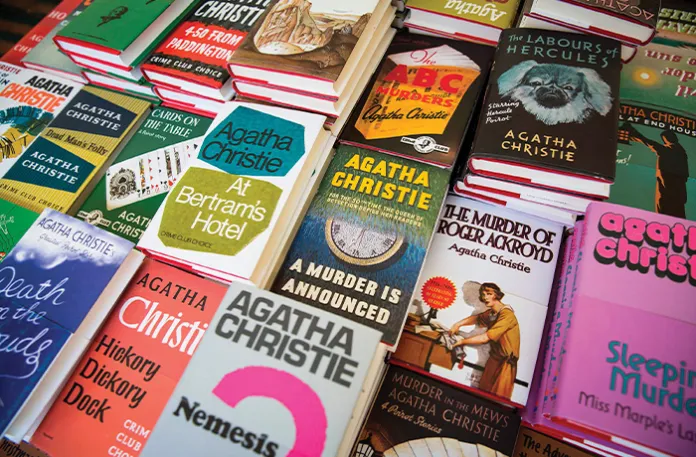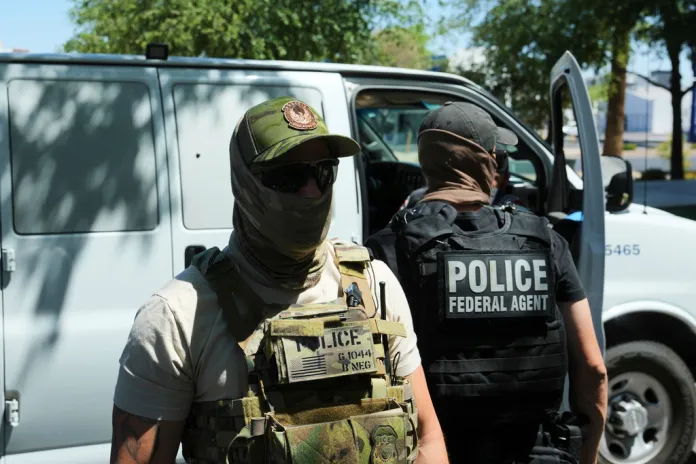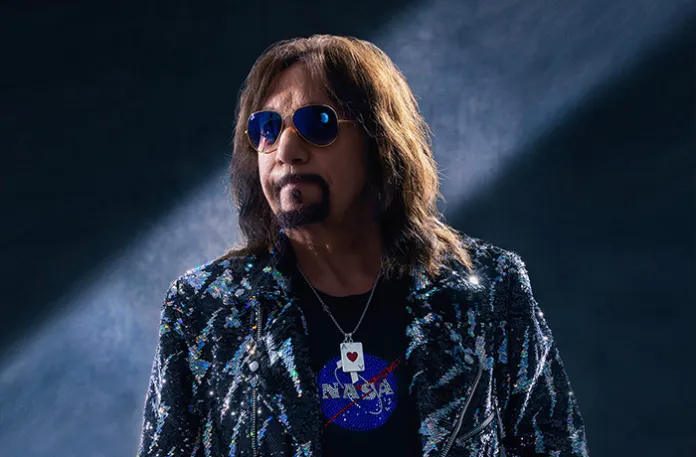Against protest songs – Washington Examiner
The article discusses the potential revival of protest songs in modern music, focusing on the impact of political fears at home and abroad. It highlights the emergence of political music genres like protest songs and their evolution over time. The author examines the history of protest songs, their relationship with political movements, and the role of artists like Bob Dylan in shaping the genre. Additionally, the article critiques the effectiveness and aesthetics of protest songs in conveying political messages.
Against protest songs
The past several months have provided much fuel for political fears both at home and abroad. But there is one worrisome political development in particular that has received too little attention: Are we in danger of a protest song revival?
In May, for instance, the rapper Macklemore released “Hind’s Hall,” a song about the pro-Palestinian protests on college campuses, to surprising acclaim. Before this, Macklemore was primarily known for two things: accepting a Grammy with a particularly obsequious speech and appearing onstage in a costume that he, and virtually no one else, claimed was not antisemitic.
What was particularly interesting about this track was that it garnered a good deal of (mostly positive) commentary that was almost entirely independent of the song’s aesthetic merits. That such a protest song existed at all was in itself apparently meritorious. Thus, in a strange way, Macklemore’s track represents a kind of postmodern apotheosis of the protest song as a musical form — at least until someone manages to earn plaudits for merely announcing the intention to write a protest song.
The protest song was always a curious subgenre. Within the annals of musical history, it is a relatively recent invention. It is important to distinguish it from the much older style of lamentation, a rich poetic form found throughout most of the world’s great traditions, expressing grief and anguish without necessarily seeking an appeal of grievances. For most of history there was no popular audience to appeal to that might also be considered a political agent anyway. If you required recompense, you had to appeal to a narrower hierarchy. (Think Niccolo Machiavelli’s dedicatory letter at the beginning of The Prince, addressed to the scion of the same family that had recently had him tortured.)
Protesting as an art form required first the democratization of political life in modern times. And before the rise of the protest song, there was protest fiction — some of it, like Emile Zola’s, quite excellent. But in his remarkable book The Hero and the Blues, the American essayist Albert Murray compares protest fiction unfavorably to what he terms the “heroic tradition” of literary art, in which he includes American blues. For a blues singer faces death and destruction squarely; there is no cosmic court of appeals for such things. Thus, a figure like Robert Johnson is a kind of heir to Beowulf who knows the dragon he fights will be his death. Both see the terrible reality of things and do not look away. By contrast, the protest genre seeks to shame the dragon into improving, perhaps a politically worthwhile endeavor but not an aesthetically or philosophically interesting one:
In effect, protest or finger-pointing fiction such as Uncle Tom’s Children and Native Son addresses itself to the humanity of the dragon in the very process of depicting him as a fire-snorting monster: “Shame on you, Sir Dragon,” it says in effect, “be a nice man and a good citizen.”
In any case, as popular music overtook literature as a dominant medium, the protest genre followed suit. Protest songs are of their nature tied to immediate context — be it a war, economic conditions, an unpopular government, or what have you. But pop music is, after all, itself largely ephemeral. Everyone by now knows the boomer litany, predominantly associated with the 1960s, and one can aurally anticipate them when the relevant documentary footage starts rolling: “For What It’s Worth,” “Fortunate Son,” “Ohio,” “Give Peace a Chance,” et very much cetera. This era proved relatively brief. It’s not very nice to say, but what truly killed it off was Nixon’s decision to wind down conscription, finally ending the draft altogether in 1973.
The protest song subsequently evolved into what might be termed a broader form of socially and politically conscious music, cutting across other musical genres. The most durable of this is probably post-’60s album-oriented soul music, which saw artists like Marvin Gaye, Curtis Mayfield, War, and Stevie Wonder, among others, making veritable masterpieces, many of which remain among the peaks of popular recorded music.
Contrary to that decade’s superficial image, political music wouldn’t disappear entirely during the 1980s, but it would become more indirect. For example, I’m reliably informed that R.E.M.’s “Fall On Me” and “Orange Crush” are about, respectively, the environment and the U.S. military’s use of Agent Orange during the Vietnam War. But I would defy most listeners to pick up on this subtext in the absence of Wikipedia. Similarly, Bono famously introduced U2’s hit “Sunday Bloody Sunday” in concert by insisting, “This is not a rebel song!”
Bruce Springsteen has always been at least semipolitical, and during the mid-’80s, he produced a colossal hit with “Born in the USA,” a highly protest-y song not generally received as such by listeners. Here one must insist on the point that pop music as a form is essentially about surface pleasures, and there’s a reason that The Boss chose to release the anthemic electric version of the song rather than its sorrowful acoustic demo, and that reason isn’t irony.
The 1990s saw a sort-of revival of more obviously political music, but this tended to reflect a more generic attempt to signal one’s commitment to vaguely left-liberal causes — e.g., supergroups Temple of the Dog’s “Hunger Strike,” with its immortal opening line, “I don’t mind stealin’ bread from the mouths of decadence.” Most of this managed to come off both lazy and sanctimonious. This development reached its nadir with 4 Non Blondes’s “What’s Up?” which is widely viewed as one of the worst songs ever written by anybody.
In the ’90s, there have been some protest song-adjacent entries into popular music in rap and rock, such as “Fight the Power” by Public Enemy or much of the oeuvre of Rage Against the Machine, which evokes a highly specific set of left-wing obsessions that seem like the band might have gotten its politics by reading Howard Zinn on PCP. None made anything more than ripples in political music history. And since then, political music has been an intermittent phenomenon at best, perhaps because during the years of the Trump presidency, COVID lockdowns, Black Lives Matter, and so on, the political energy once reserved for art (not to say actual politics) was channeled into social media.
Of course, one cannot discuss the protest song as a genre without bringing in one Bob Dylan, who penned more of them than anyone, save perhaps Woody Guthrie. These include most famously “Blowin’ In the Wind,” “Masters of War,” and “The Times They Are a-Changin.’” Perhaps the most artistically successful of these, and a short-list candidate for Dylan’s greatest-ever songs, is “A Hard Rain’s a-Gonna Fall,” which deals with the theme of nuclear war but does so in such oblique fashion that it feels timeless rather than topical.
But Dylan has a complicated relationship with the protest song — not that anything about the man is really straightforward. In a career that now approaches its 65th year, he has scarcely written a protest song for 60 of them. Indeed, as early as 1964, he had already recorded “My Back Pages,” which is widely interpreted as a rejection of his political phase, with its lilting refrain “But I was so much older then/ I’m younger than that now.” True, he did once describe the later “Rainy Day Women #12 and 35” as one of the “protestiest” things he’d ever written, but in that same interview, he also claimed to be Swedish and was apparently high on amphetamines.
Dylan himself has proclaimed Jimmy Cliff’s “Vietnam” to be the greatest protest song ever written, and here one must defer to the master. The lyrics to the song are straightforward to the point of simplicity: The narrator’s friend writes him a letter from Vietnam, where he’s stationed. One stanza later, his mother receives another letter informing her of his death. But Cliff, who had one of the great voices of the classic rocksteady and reggae era, sings the hell out of it. And like the kids on American Bandstand used to say, it’s got a good beat and you can dance to it.
This alone places it above just about every other protest song I’ve heard and surely contributes to its durability long after the end of the titular war. Indeed, I’m listening to it now.
CLICK HERE TO READ MORE FROM THE WASHINGTON EXAMINER
David Polansky is a Toronto-based writer and a research fellow with the Institute for Peace and Diplomacy. Find him at strangefrequencies.co.
" Conservative News Daily does not always share or support the views and opinions expressed here; they are just those of the writer."




